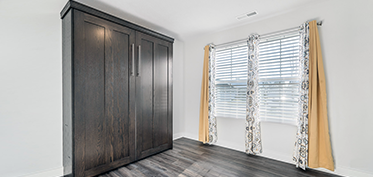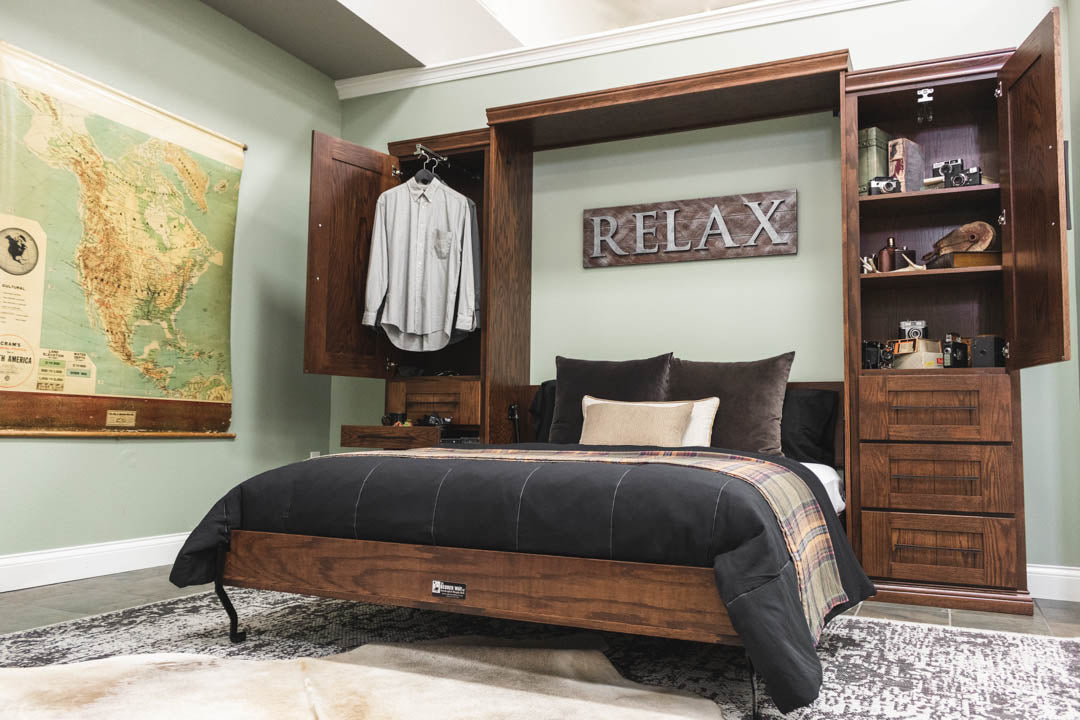WOOD EXPECTATIONS
What to expect
Wood is a product of nature and is affected by climate, soil nutrients, growing season, season of harvest and age at harvest. Wood contains natural imperfections that are part of its appeal and character. Every piece of wood—even within the same tree—is slightly different in color, texture and grain from every other piece. This variety will also be reflected in the final finish because the finishes are applied to wood products that are naturally (and beautifully) inconsistent. Below are a few examples of what to expect from our real wood products.

End grain
End grain will be noticeable on edges of our cabinetry where the wood is cut across the growth rings. End grain surfaces are also softer in composition which causes it to absorb more stain and often appear darker.



Mineral deposits
Mineral deposits are natural occurring deposits that may appear lighter or darker when stain is applied. These deposits add character to the wood and is often considered to be an asset to the aesthetic of the material.

Joint lines
Wood (especially solid wood) will expand and contract which may cause small finish splits where two pieces come together. These joint lines are typically only visible on painted projects and will not weaken or lessen the strength of the joints.


Wood knots
Knots are a common and naturally occurring phenomenon in real wood material. Many customers value knots as a desirable feature in the wood.

Wood Splits
Splits occur occasionally in wood material, such as the stiles and rails of doors and/or drawer fronts. This will not affect the structural integrity of the bed.




